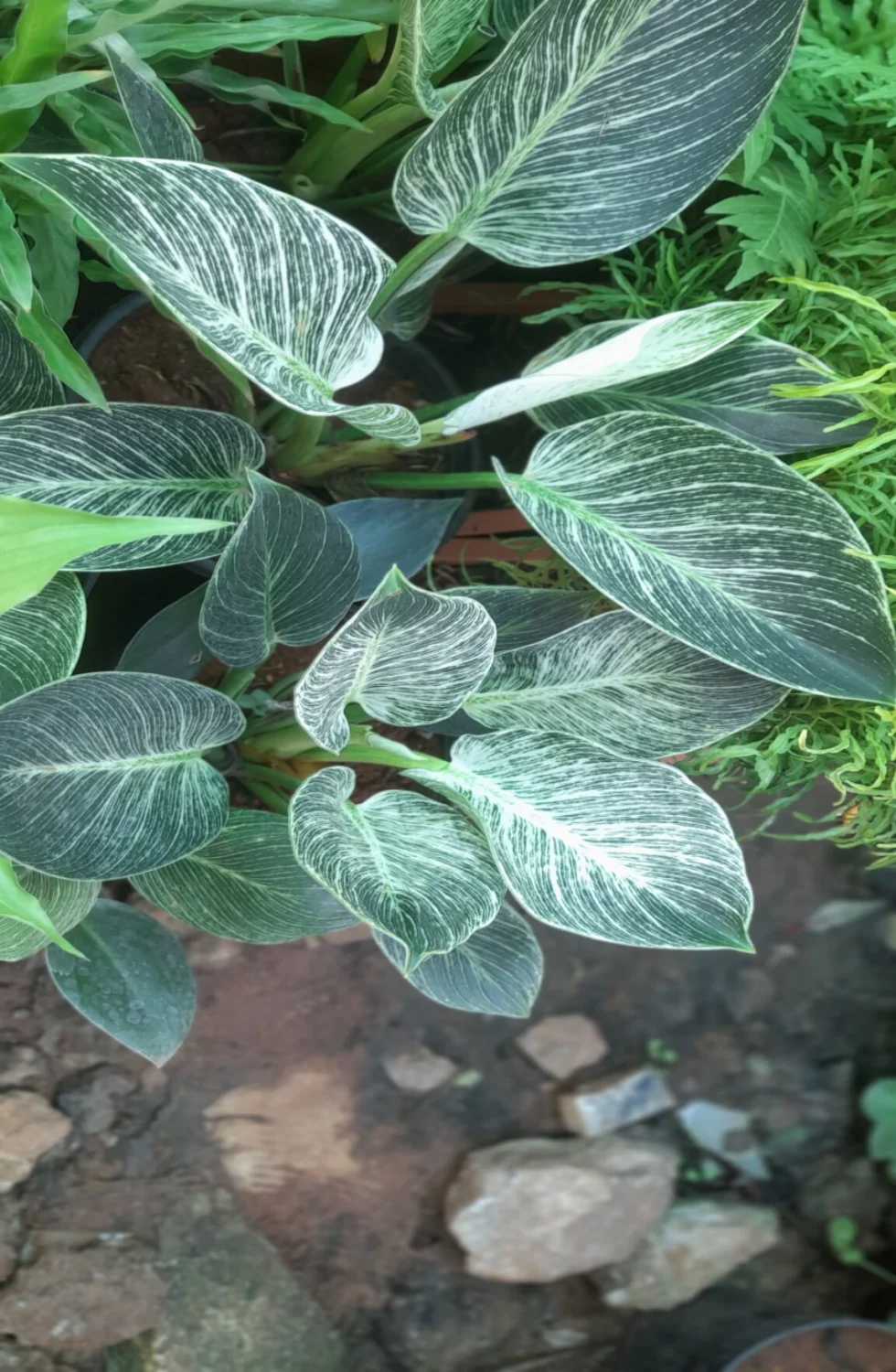
Image: Philodendron birkin by Yercaud-elango is licensed under CC BY-SA 4.0
You’ll find the Philodendron Birkin‘s bold foliage an instant conversation starter. It has deep green leaves with stylish white pinstripes. This houseplant adds a modern twist to any indoor setting.
Believed to be a spontaneous mutation from the Philodendron Rojo Congo the Birkin is known for its slow upright growth. It’s easy to care for when you provide bright indirect light and moderate watering. As each new leaf matures it gains more striking variegation that keeps you captivated.
You’ll soon see why it’s popular among plant lovers thanks to its elegant look and fuss-free nature. Let’s explore its basic needs so you can watch your Birkin thrive.
Philodendron Birkin quick care guide
- Place the plant in bright, indirect light. Example: near east-facing windows.
- Water once every 1–2 weeks. Example: allow the top 2cm of soil to dry before watering again.
- Maintain a comfortable indoor temperature range of 18°C–29°C. Example: keep away from cold drafts.
- Aim for moderate humidity above 40%. Example: occasionally mist the leaves in dry environments.
- Feed with a balanced houseplant fertiliser every 4 weeks during spring and summer. Example: use a diluted 10-10-10 solution.
- Monitor leaf colour for signs of overexposure to sunlight or inconsistent watering. Example: pale leaves often indicate stress.
- Avoid direct sun. Example: strong rays can scorch the variegated foliage.
- Keep the plant away from pets. Example: sap is toxic upon ingestion.
Philodendron Birkin key facts

| Detail | Information |
|---|---|
| Name meaning | Draws from Greek philo (love) and dendron (tree) |
| Family | Part of an umbrella genus featuring 489 species |
| Region | Native to tropical South America |
| Discovery date | Recorded in Brazilian rainforests in the early 17th century |
| Growth pattern | Grows slowly reaching approximately 90cm tall in indoor settings |
| Foliage distinction | Features pronounced white pinstripes on glossy dark green leaves |
| Resilience level | Shows tolerance for moderate changes in indoor temperature and humidity |
| Ease of care | Considered easy to moderate |
Check leaf variegation to assess light exposure if leaves appear faded. Track soil moisture levels by feeling the top 2cm for dryness if you want to prevent overwatering. Maintain temperatures between 18°C and 29°C to accommodate its tropical background without subjecting the plant to cold drafts. Observe any yellowing or browning at leaf edges if humidity drops below 40%.
Growing notes for Philodendron Birkin
You can keep your Birkin thriving by paying attention to its environment and responding to its signals. Notice when its leaves droop or lose vibrancy and adjust your care routine accordingly. Each leaf is a reminder of your success (or otherwise) in finding the right balance of light, water, and nourishment.
Light and water requirements
Philodendron Birkin thrives in bright, indirect light. Place it near east-facing windows for optimal growth. Water the plant once every 1–2 weeks, allowing the top 2cm of soil to dry out before watering again. This balance helps prevent overwatering, which can lead to root rot.
Fertiliser requirements
During the growing season in spring and summer, feed your Philodendron Birkin with a balanced houseplant fertiliser every four weeks. A diluted 10-10-10 solution works well to provide the necessary nutrients for healthy growth.
Propagation and leaf maintenance
Propagation can be done through stem cuttings. Ensure each cutting has at least one node, as this is where new roots will develop. For leaf maintenance, regularly wipe the leaves with a damp cloth to remove dust and enhance photosynthesis.
Winter Care
In winter, reduce watering frequency as the plant’s growth slows down. Maintain indoor temperatures between 18°C and 24°C, and consider using a humidifier if the air is particularly dry. This will help prevent leaf drop and maintain overall plant health.
Common problems and solutions
Common issues include yellowing leaves, which may indicate overwatering or insufficient light. Adjust your watering schedule and ensure the plant receives adequate light. If you notice brown leaf edges, it could be a sign of low humidity; increase humidity levels by misting the leaves or using a pebble tray.
With a bit of patience and curiosity you’ll watch your plant flourish into a lively companion that brightens your room. Enjoy the journey and keep experimenting with small adjustments to see your Birkin at its best.
Martin Cole has been an avid plant lover and gardener for more than 20 years and loves to talk and write about gardening. In 2006 he was a finalist in the BBC Gardener of the Year competition. He is a member of the National dahlia Society.
He previously lived in London and Sydney, Australia, where he took a diploma course in Horticultural studies and is now based in North Berwick in Scotland. He founded GardeningStepbyStep.com in 2012. The website is aimed at everybody who loves plants or has been bitten by the gardening bug and wants to know more.
Gardening Step by Step has been cited by Thompson and Morgan, the UK’s largest mail order plant retailer, as a website that publishes expert gardening content.

